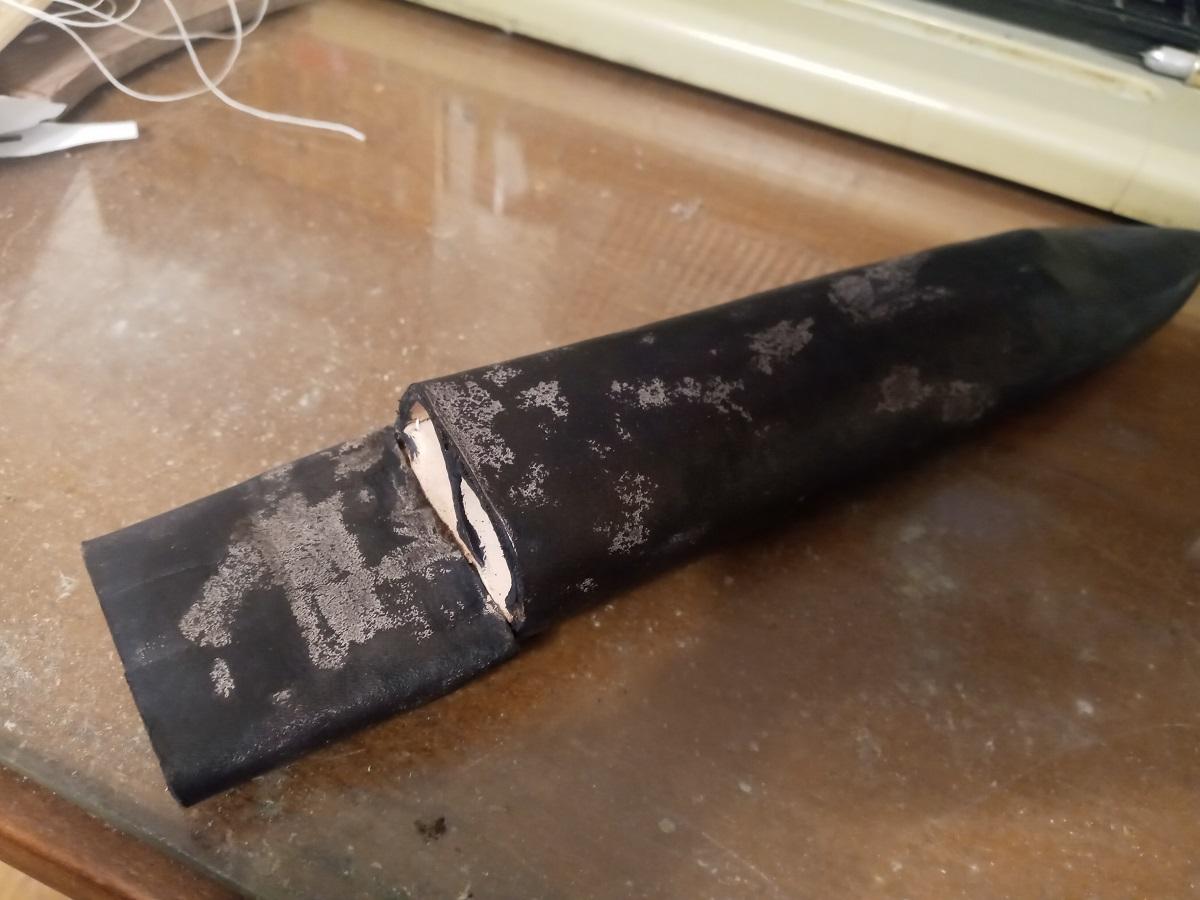
DanDSilva
Members-
Posts
37 -
Joined
-
Last visited
Recent Profile Visitors
The recent visitors block is disabled and is not being shown to other users.
DanDSilva's Achievements

Member (2/4)
-
Interesting. The reason I tried it with hide glue was on the advice of several people who say they've used it for similar projects -- one suggest it for a two-layer leather scabbard and another for adhering the facing to a wood core with side leather pockets. I've used it before myself, but not in cases where I'd then dye it -- one was a rawhide facing on a wooden shield which I then sealed with oil paint, and another was a pre-dyed chrome-tan facing on a wood scabbard core, which I applied dry. After thinking it over I'm beginning to lean toward the glue getting out through the openings in the facing for the side pockets and getting smudged as I stitched the facing. The fact that I applied the facing wet probably didn't help. I'll look for a gum eraser, but if I can't get one I'll just dye and dye again.
-
Hello again, I recently constructed a sheath for an antique-style hunting cleaver with a by-knife and fork in side pockets. The main sheath, side pockets and facing are all thin, molded veg-tan, with a small amount of Titebond hide glue to hold the facing in place. This is the first time I've built a sheath like this. I just dyed it this afternoon and found that in certain areas the dye was patchy. I suspect these are areas where the glue either soaked through or got onto the outside. Is this likely to be the problem? If so, is there anything I can do about it at this point? Thanks very much for any advice.
-
Oh hey, I found it! https://www.ccsutlery.com/store/saber-belt-brass-stud.html It turns out I hadn't seen how they're installed in the straps from the back and didn't realize they're actually double-ended, buttoned through both the front and back of the strap, rather than riveted or screwed in place like a modern leather button.
-
Huh. I've been using belt rivets for 15 years and it somehow never came to my attention that they're supposed to be used with a setter. Thanks!
-
I mean, the shanks are tapered just toward the ends, the burrs don't fit down past the taper, and on all the rivets I can easily get, the length of shank that's not tapered is at least 2mm too long to snugly hold two 2mm layers. So I'd have to either taper the shank further down, or widen the burr holes (which is also something I'd prefer to avoid if reasonably possible).
-
Hello everyone, I'm looking for belt rivets (the kind with burrs, not the threaded kind) for two layers of 2mm thick leather. The smallest ones in the local store are listed as 3/8" and are 2mm too long, so I guess I'm looking for ones that are as close as possible to 19/64". I'm not at all confident that 1/4" ones would work. I know it should be possible to shorten and re-taper the shanks of 3/8" ones, but I figured it couldn't hurt to ask before doing something that tedious.
-
From what I'm finding, it appears that tarpaulins normally use snap buttons.
-
I'll take a look, thanks.
-
I have, but their largest ones look to be too small and not the right shape.
-
Hello again. I'm looking for very wide-headed buttons for a 19th-century sword belt. There are some photos here. I've seen replicas of these sorts of belts with this sort of button sold online, but so far I haven't been able to dig up a source for just the buttons. Right now I have the idea of grinding the top halves off the heads of regular Sam Browne-type buttons so there's the maximum possible flat surface, and soldering brass discs on, but I figure wide-headed ones that were actually made as such would look better, not be at risk of solder failing, and save me the trouble. Has anyone seen them for sale?
-
Hello, I recently came across this thread discussing making a brush-on dye which begins by boiling some Salicornia in the water before adding the dyestuffs and other ingredients. I'd really like to try it. All the ingredients are readily available and not too expensive except for the Salicornia itself, which it seems I can only get from specialty online food stores that charge quite a bit in shipping because it's a fresh vegetable. I was wondering if anyone could explain or at least speculate on what purpose the plant serves in the dye and whether it would be possible to substitute anything for it. I know it's alkaline and high in salt, but I don't know if either of those is what's important; plants contain so many different substances. I have tried contacting the OP but since he hasn't been active outside of that one thread and it was seven years ago, I don't really expect an answer.
-
Milling is a pretty common technique, so there are probably lots of cowhides from different makers that look like that. If you don't want to gamble on one that might not turn out to be to your liking, maybe bring a scrap back to the store you got it from and ask who made it or if they plan to restock it.



